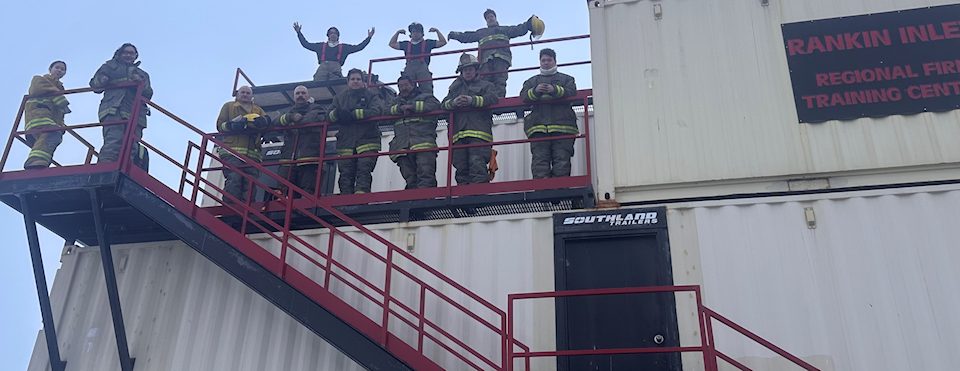This is the second installment in a two-part series on Rankin Inlet Fire Chief Mark Wyatt's evaluation of the challenges facing firefighters in Nunavut.
A lack of equipment and resources are among the major issues facing Nunavut's fire departments.
Rankin Inlet Fire Chief Mark Wyatt said most fire departments across the territory are only equipped with one fire truck.
“We're lucky enough in Rankin to have two at this point, but you go into the vast majority of communities in Nunavut and they don't have as much as a single hydrant,” said Wyatt. “While there may be a couple of hydrants in Cambridge Bay, Rankin and Iqaluit are the only departments in the territory to have a utilidor system.
“All the other communities rely on water trucks to bring water to the fire truck to help put out a fire. That becomes very problematic and very slow. And, not having a continuous water supply makes it very hard to contain some of these buildings.
“No fault to the firefighters, but with the lack of equipment, the lack of numbers, the lack of training and the lack of resources, it's pretty hard to defend against some of the fires we have.
“And, when you're only training eight students how to do it per year, most of the the people who are attending the courses are our fire chiefs. You get people appointed in communities to be fire chiefs who have virtually no training or, at best, a minimum amount of training. And that's even in regards to being able to teach new members — coming to take Level 1 and Level 2 courses — how to do things.”
As hard as they're trying, Wyatt said they are working without the proper resources to lead effectively.
He said also, in many communities, there's a lack of support for the fire departments between the hamlet and the senior administrative officers (SAOs).
“They're underfunded. There are communities I've talked to where the SAO will barely even talk to the fire chief.
“Rankin is an anomaly. I have great support from the SAO and the hamlet. I've been in the fire services for 21 years now, have a lot of training and am able to pass on that knowledge to the firefighters we have here.
“I would not hesitate to say that we, (Rankin Inlet or Iqaluit), have the best-trained fire department in the territory. We also respond to a ton of calls. While most are medical calls, that's what keeps the fire department going.”
Wyatt said people also have to remember that every community in Nunavut is a fly-in community.
He said that means there's no driving between communities, so you have virtually no mutual aid.
“Down south, in almost any community in the region, if there's a major fire, you're not going to have just the local fire department responding. You're also going to have fire departments from other surrounding communities responding to that same fire.
“Here, you've got what you got. So in a community with eight firefighters and one truck, that's what you've got. That's a huge challenge. No mutual aid is very, very difficult.
“Even Iqaluit has been challenged with that, and there have been a couple of times where there have been firefighters flown into Iqaluit from other communities to help battle fires they had there.
“So, you add everything up, and I would say Nunavut is one of the most challenging places on the planet to be a firefighter.”
